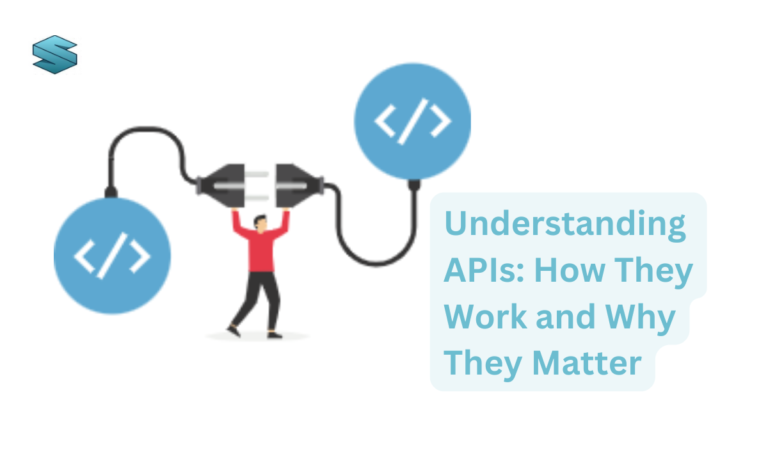
APIs
APIs have transformed the way applications interact, making software development more efficient and interconnected. From simple data retrieval to powering entire cloud ecosystems, APIs are an indispensable part of modern technology. By understanding how they work, their challenges, and best practices, businesses and developers can harness their full potential to drive innovation and efficiency.
In today’s interconnected digital world, Application Programming Interfaces (APIs) play a crucial role in enabling seamless communication between software applications. Whether it’s accessing weather data, making online payments, or integrating third-party services, APIs are the backbone of modern digital experiences. This article delves into the fundamentals of APIs, their importance, real-world applications, challenges, and best practices to help both beginners and professionals understand their significance.
These interfaces streamline communication between different software systems, reducing redundancy and enabling seamless data exchange across platforms. From simple data retrieval in mobile apps to powering entire cloud ecosystems that support global enterprises, APIs are an indispensable part of modern technology. They play a crucial role in automation, artificial intelligence, and IoT, providing a foundation for smart applications that enhance productivity and decision-making. By gaining a deep understanding of how APIs function, recognizing their challenges, and implementing best practices, businesses and developers can harness their full potential to drive innovation, enhance operational efficiency, and create more scalable and robust digital solutions for the future.
What is an API?
An Application Programming Interface (API) is a set of rules and protocols that allow different software applications to communicate with each other. APIs define how requests and responses should be formatted, ensuring interoperability between systems.
Key Components of an API
Endpoints – URLs through which applications interact.
Methods – Common HTTP methods like GET, POST, PUT, and DELETE.
Request & Response – Data exchange format, usually JSON or XML.
Authentication – Security mechanisms such as API keys and OAuth.
How APIs Work
APIs function as intermediaries between a client (requesting data) and a server (providing data). Here’s a simple workflow:
A user initiates a request via an application.
The application sends a request to an API endpoint.
The API processes the request and retrieves data from a database or service.
The API returns the response to the application.
The application presents the retrieved data to the user.
Why APIs are Important
APIs have revolutionized software development by offering several key benefits:
Seamless Integration: APIs enable different applications to communicate efficiently.
Improved Efficiency: Developers can leverage existing functionalities instead of building from scratch.
Scalability: APIs facilitate modular development, making it easier to scale applications.
Automation & Innovation: Many business operations rely on API-driven automation.
Practical Applications of APIs
APIs are widely used across various industries to enhance functionality and connectivity. Some notable examples include:
1. E-commerce:
Payment gateways (e.g., PayPal, Stripe APIs) for seamless transactions.
Product recommendation engines powered by APIs.
2. Social Media:
Twitter and Facebook APIs enable third-party applications to access user feeds.
Chatbots that use APIs for real-time interactions.
3. Healthcare:
APIs connect patient records across hospitals for improved care.
Wearable devices use APIs to send health metrics to apps.
4. Cloud Computing & AI:
Google Cloud and AWS provide APIs for storage, machine learning, and computing.
AI-powered chatbots rely on NLP APIs for intelligent responses.
Best Practices for API Development & Usage
To maximize the efficiency of APIs, consider the following best practices:
Design RESTful APIs for simplicity and scalability.
Use authentication & authorization to enhance security.
Ensure proper API versioning to prevent breaking changes.
Provide detailed documentation to facilitate adoption.
Implement rate limiting to manage request loads efficiently.
Monitor API performance to detect and resolve issues proactively.
Common Challenges & Solutions in API Usage
| Challenge | Solution |
|---|---|
| Security vulnerabilities | Implement OAuth, API keys, and encryption. |
| Rate limiting issues | Use throttling to control API requests. |
| Data inconsistency | Ensure proper versioning and documentation. |
| Poor API documentation | Provide clear and comprehensive API docs. |
| Performance bottlenecks | Optimize response times with caching. |
APIs vs. Web Services Comparison
| Feature | API | Web Service |
|---|---|---|
| Definition | Allows communication between software applications. | A network-based resource for application communication. |
| Format | Supports JSON, XML, GraphQL, etc. | Primarily uses XML-based protocols. |
| Accessibility | Can be used online or offline. | Requires network access. |
